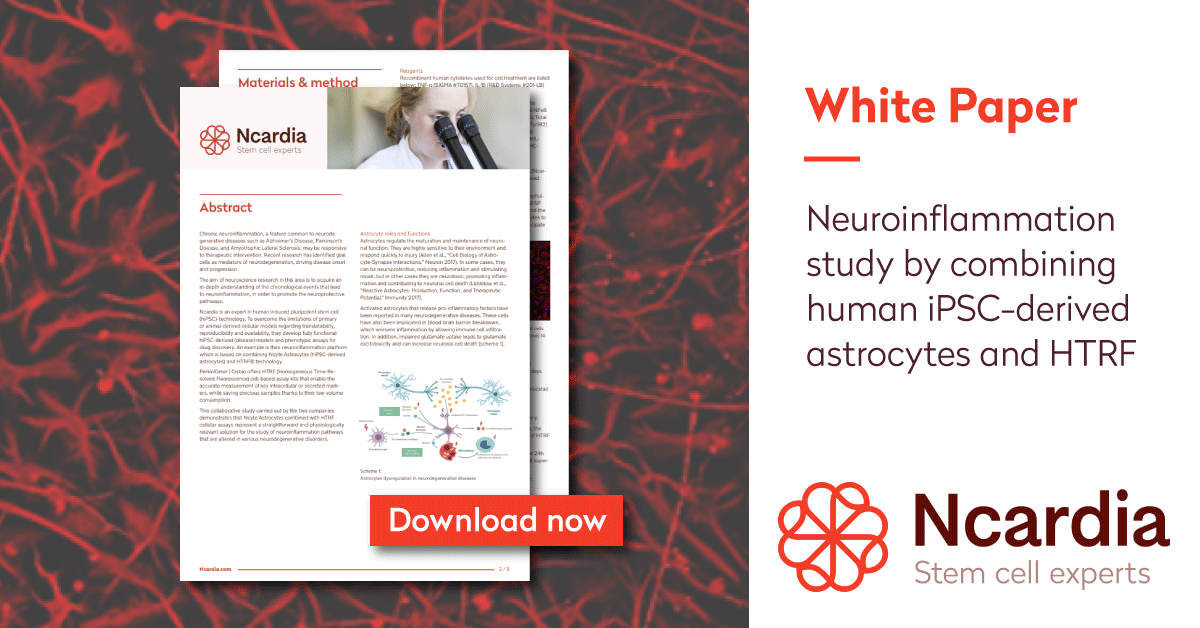Ncyte® Astrocytes
Human iPSC-derived astrocytes
Astrocytes are essential players in neurodegenerative disease progression providing a valuable tool for drug discovery and disease modeling. Human iPSC-derived astrocytes generated with our standardized process express key identity markers and support co-culture with human iPSC-derived neurons.
Our team can manufacture astrocytes at scale from the iPSC that best fits your project or work with off-the-shelf Ncyte® Astrocytes to model relevant disease-phenotypes and support your drug discovery campaigns.
- High purity populations
- Ideal for co-culturing with hiPSC-derived neurons
- Suitable for neuroinflammatory assays
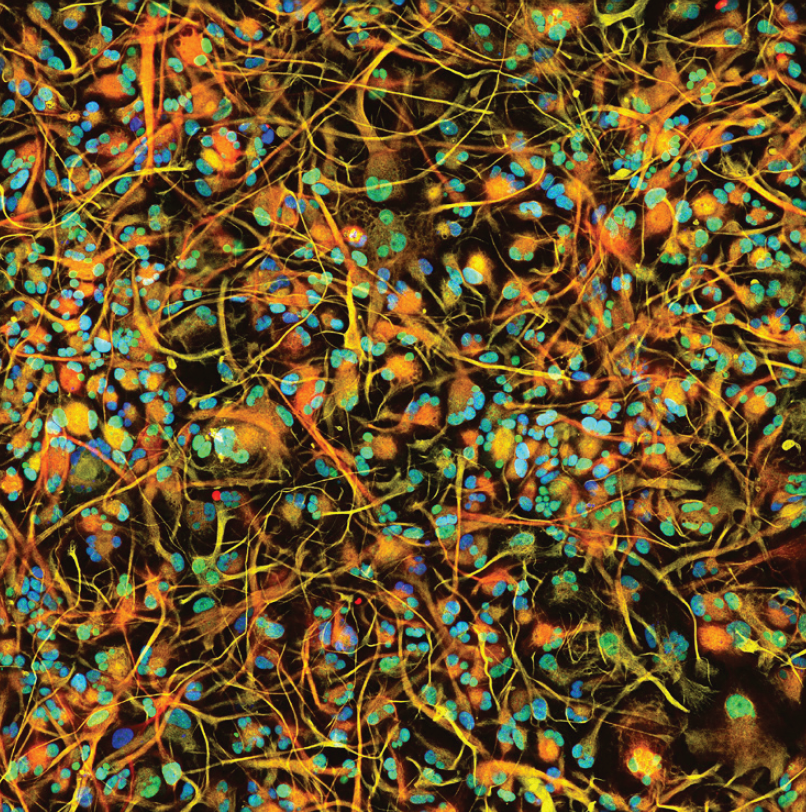
(red) and DAPI (blue)
Do you want to buy Ncyte® Astrocytes?
To proceed with your order, please review and accept our Terms and Conditions above.
Do you want to buy Ncyte® Neuronal Supplement?
To proceed with your order, please review and accept our Terms and Conditions above.
Do you need a larger volume or a custom cell model?
Product Specifications
Identity markers
≥ 70% GFAP at day 10 post thaw and culture as per user guide.
Size
≥ 2M viable cells after thawing according to user guide
Quality Control
Cell count, Viability, Identity, Mycoplasma
Format
Cryopreserved cells
Donor
Female
Reprogramming method
Non-viral
Shipping conditions
Dry shipper, -180°C to -135°C
Storage conditions
Vapor phase of liquid nitrogen
Supplied with
Ncyte® Neuronal Supplement
Technical Data
Ncyte® Astrocytes display the characteristic star-shaped morphology of astrocytes in culture. They express key identity markers such as the glial fibrillary acidic protein (GFAP) and makers of mature stage: S100 calcium-binding protein B (S100ß) and aquaporin 4 (AQP4). Further identification based on other biomarkers can be performed upon request.
 Immunofluorescence labeling of AQP4 (green), GFAP (yellow), ßIIItubulin (red) and DAPI (blue) for Ncyte® Astrocytes after 10 days of maturation.
Immunofluorescence labeling of AQP4 (green), GFAP (yellow), ßIIItubulin (red) and DAPI (blue) for Ncyte® Astrocytes after 10 days of maturation.
Ncyte® Astrocytes are a physiologically relevant tool for in vitro testing based on human biology. They recapitulate important functions of astrocytes in the brain, such as, contributing to the homeostasis of the glutamate neurotransmitter, which affects the neuronal firing activity. In this example, co-culturing of human iPSC-derived cortical neurons with Ncyte® Astrocytes increased the neuronal firing activity and reduced extracellular levels of glutamate. This enables long-term studies and physiologically relevant disease modeling.
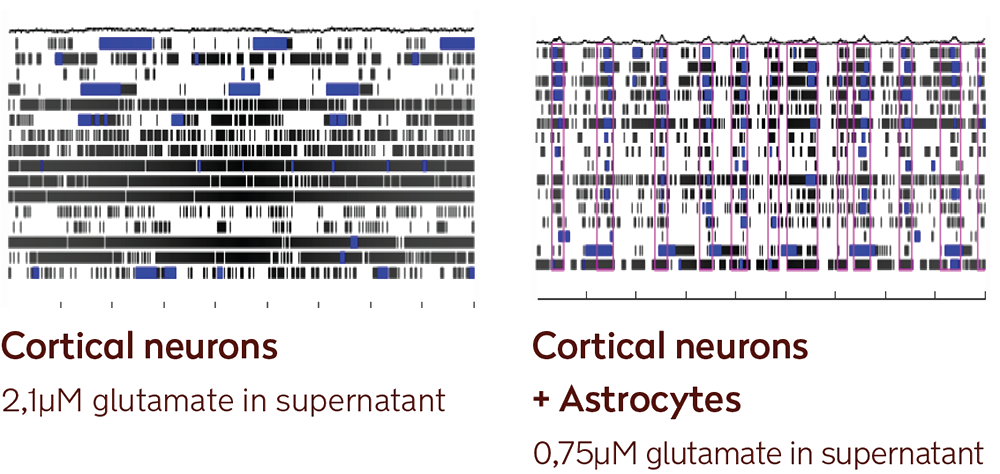 Multi-electrode array (MEA) raster plots of cortical neurons at day 14 post-thawing in absence (A) and presence of astrocytes (B). The overall neuronal electrical activity increases in the co-culture with astrocytes
Multi-electrode array (MEA) raster plots of cortical neurons at day 14 post-thawing in absence (A) and presence of astrocytes (B). The overall neuronal electrical activity increases in the co-culture with astrocytes
Ncyte® Astrocytes are highly suitable for long-term electrophysiological studies and disease modeling of neurodegenerative diseases where neuroinflammation plays an important role. Our team of neuroscientists is experienced in assay development and screening of neuroinflammatory responses and can help you assess the efficacy and safety of your therapeutic candidates in this context.
 Ncyte® Astrocytes release inflammatory mediators such as IL-6, IL-8, CCL-2, and BDNF upon treatment with a pro-inflammatory cocktail, consisting of TNF-alpha, IL-1Beta and IFN-gamma. Study at day 7 post-thaw. (-): non-treated cells; (+/++/+++): cells treated with 3 increasing doses of the pro-inflammatory cocktail. Neuroinflammation study by combining human iPSC-derived astrocytes and HTRF, in collaboration with Cisbio.
Ncyte® Astrocytes release inflammatory mediators such as IL-6, IL-8, CCL-2, and BDNF upon treatment with a pro-inflammatory cocktail, consisting of TNF-alpha, IL-1Beta and IFN-gamma. Study at day 7 post-thaw. (-): non-treated cells; (+/++/+++): cells treated with 3 increasing doses of the pro-inflammatory cocktail. Neuroinflammation study by combining human iPSC-derived astrocytes and HTRF, in collaboration with Cisbio.
Certificates of analysis are available upon request via support@ncardia.com
Our work centers on a simple yet powerful premise:
When we combine deep iPSC knowledge, broad assay capabilities and a demonstrated ability to integrate the biology of human diseases into preclinical research, we can help drug developers make critical decisions earlier and with more confidence.
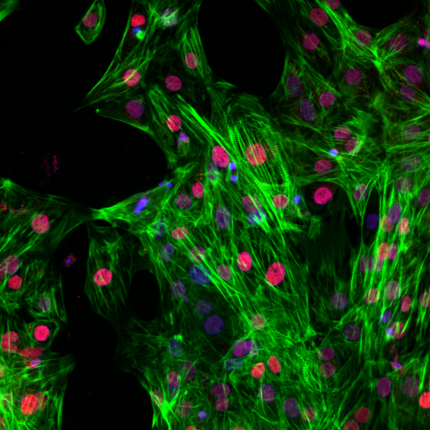
Human iPSC-derived atrial cardiomyocytes
Neural
Human iPSC-derived astrocytes
Vascular
Human iPSC-derived vascular endothelial cells
Cardiac.png)
Human iPSC-derived 3D cardiac microtissue model
Neural
Human iPSC-derived microglia
Cardiac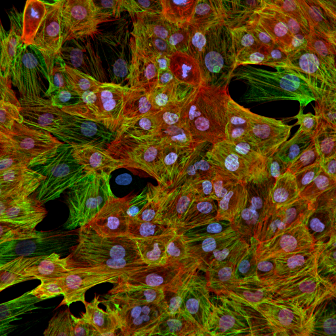
Non-Human Primate Cynomolgus iPSC-Derived Ventricular-Like Cardiomyocytes
Vascular
Human iPSC-derived vascular smooth muscle cells
Cardiac
Human iPSC-derived ventricular cardiomyocytes

